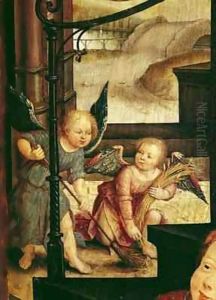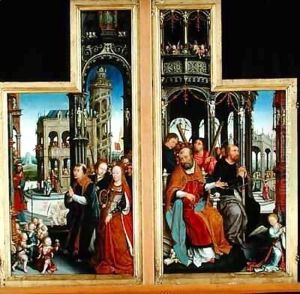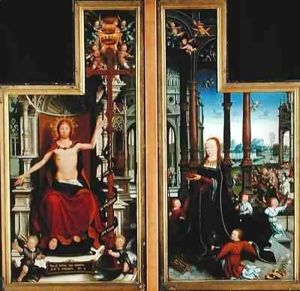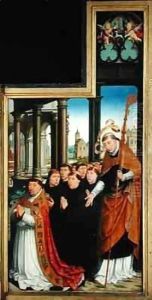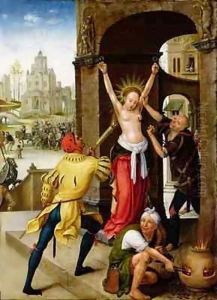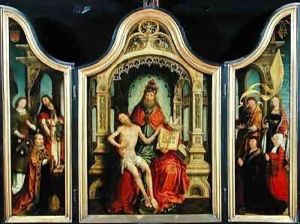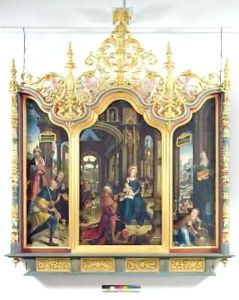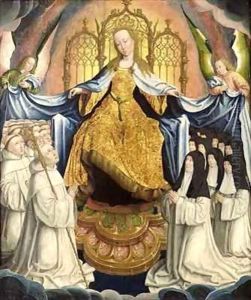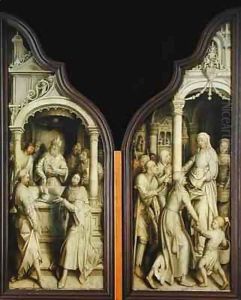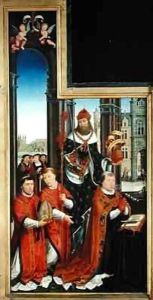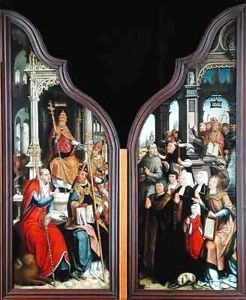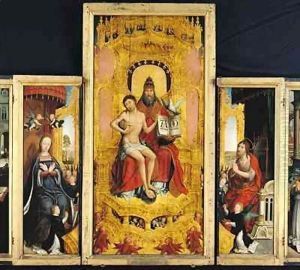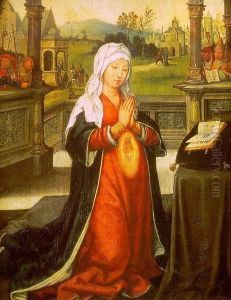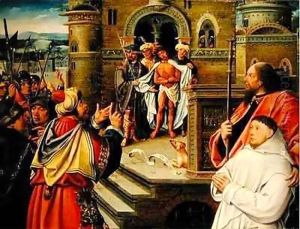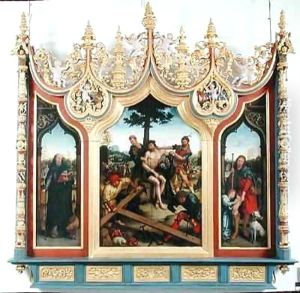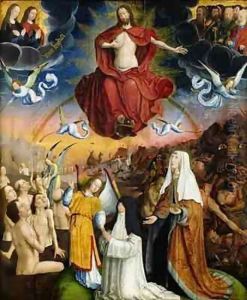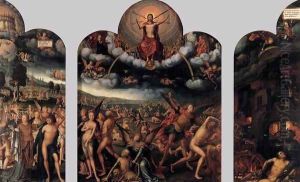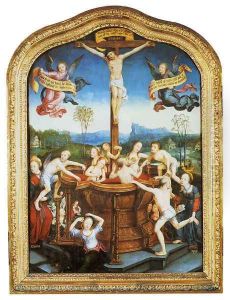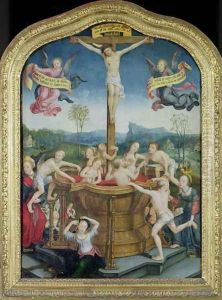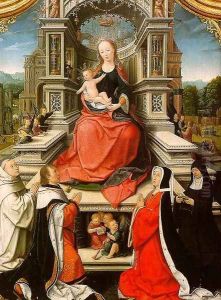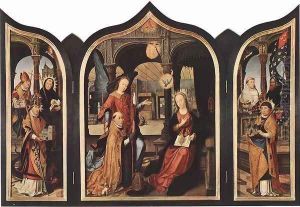Jean Bellegambe the Elder Paintings
Jean Bellegambe the Elder, also known as Jean Bellegambe or Jan Bellengambe, was a Northern Renaissance painter who is best known for his religious works. Born around 1470 in the town of Douai, which was then part of the historic region of Flanders and is now in northern France, Bellegambe was an influential figure in the school of Franco-Flemish painting that bridged the late Gothic and early Renaissance styles.
Bellegambe's style is characterized by its vivid coloration and detailed portrayal of figures, often set against intricate landscapes or interiors. He was particularly adept at using oil paints, which allowed him to achieve a richness of color and a level of detail that were highly prized at the time. His religious paintings often included complex iconography and symbolism, which were intended to convey spiritual messages to the viewer.
Jean Bellegambe the Elder's exact training is not well-documented, but it is believed that he was influenced by the work of early Netherlandish painters such as Jan van Eyck and Rogier van der Weyden. Bellegambe's works were primarily altarpieces and devotional panels commissioned by religious institutions and private patrons in and around his hometown of Douai.
Among his most famous works is the 'Triptych of the Immaculate Conception,' also known as the 'Demets Triptych,' which is noted for its intricate depiction of religious figures and its use of symbolic elements to convey the narrative of the Immaculate Conception of the Virgin Mary.
Jean Bellegambe the Elder's contributions to Northern Renaissance art were significant, particularly in the way he combined the technical innovations of the early Netherlandish painters with a distinctive style that influenced the region's artistic productions. He continued to work and influence the art scene in Douai until his death in 1535. His legacy was carried on by his descendants, who continued to be active in the arts for generations.
